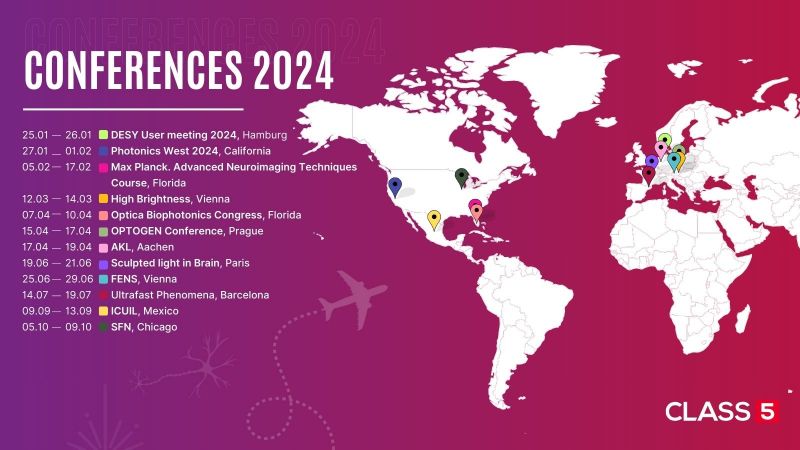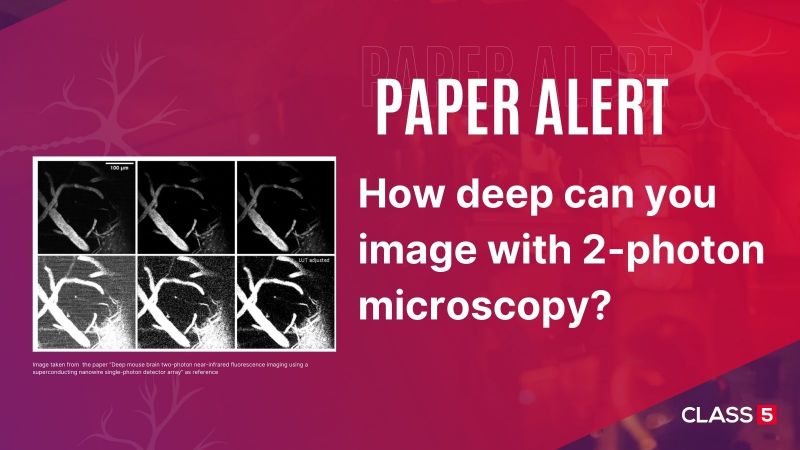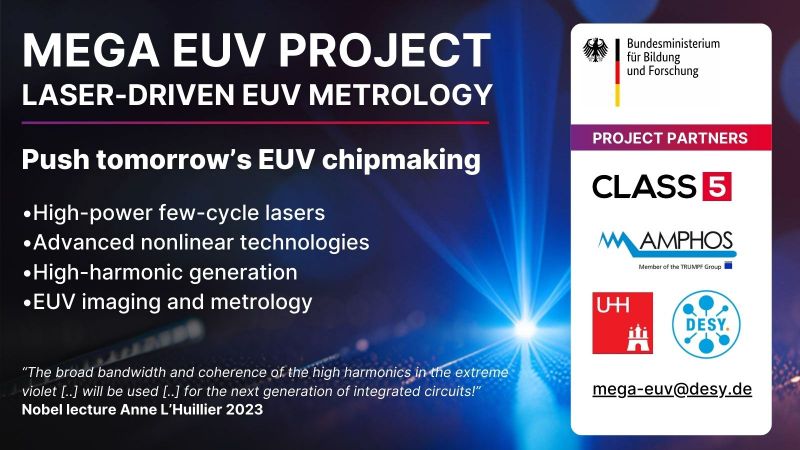See 1 Million Neurons Fire with Light Beads Microscopy and White Dwarf 2P
Video: LBM recording of 200k neurons
In recent years, the advancements in neuroscience have been nothing short of revolutionary. Advanced two- and three-photon imaging methods, once the domain of pioneering labs, are becoming increasingly sophisticated and mainstream in research settings. In addition, core facilities have started adapting two-photon (2P) and three-photon (3P) microscopy for providing imaging services to users. Robustness and reliability of the laser source are the main success factor.
With the refinement of multi-photon imaging methods, we are able to capture high-speed brain activity with greater resolution, dive deeper into the brain’s structures using 3P imaging, and achieve broader fields of view. Holographic techniques, though demanding in terms of peak power, open new routes in imaging, while fiber- coupled mini-scopes provide versatility in real-time, in-vivo visualization. Adaptive optics have taken center stage, delivering sub-cell resolution, and elucidating the nuances of neuron-axon interactions.
The key motivation for using multi-photon microscopy in neuroscience lies in the ability to use light as a non-invasive tool to measure and control neuronal activity. But in order to achieve meaningful biological results, a series of factors must be fulfilled. For many experiments, large field-of-views and thus large volumes need to be studied. This is particularly important in studies where the activity of large ensembles of neurons need to be observed simultaneously. At large volumes, also a high volumetric frame rate needs to be achieved. Other studies require sub-cell resolution deep in the brain tissue in order to study the dynamics within neuronal cell bodies with their axons and dendrites.
Light Beads Microscopy
Light beads microscopy (LBM) is an advanced two-photon imaging technique that allows scalable recordings of neuronal activity in large brain volumes. The technique uses the White Dwarf 2P high-power laser system at 960 nm coupled to a special optical cavity (“MaxiMuM”) in order to create many axially separated and temporally distinct foci using a microscope (Fig. 1).
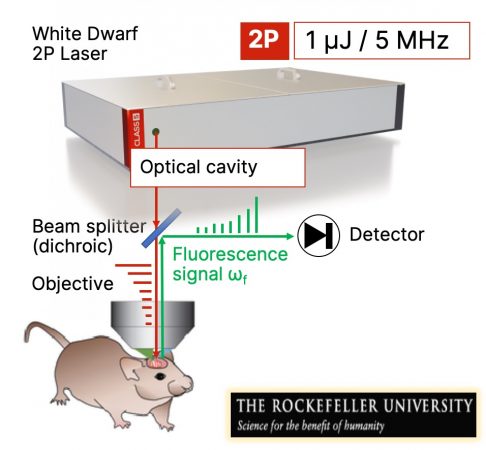
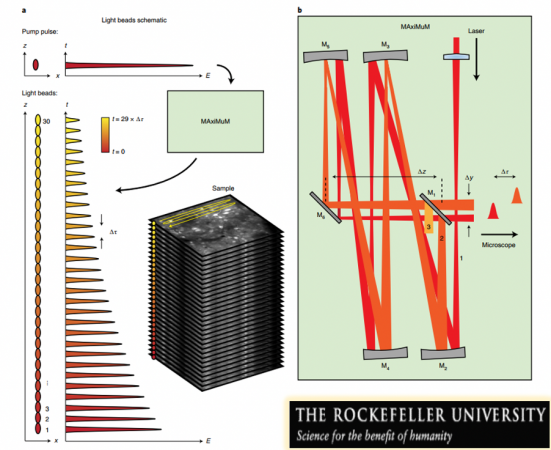
The “MAxiMuM“ cavity receives powerful laser pulses at 1 µJ pulse energy at a high repetition rate of 5 MHz, resulting in market-leading average power of more than 5 W from the White Dwarf 2P laser system. As demonstrated in Fig. 2 (a) each pulse is split in 30 sub-pulses, each with a different pulse energy and slightly different divergence, leading to a series of focus positions along the z-axis (tissue depth). Scanning the beam allows to scan 30 imaging planes simultaneously. Due to the cavity length, each round trip introduces a temporal delay between the sub-pulses. A fast data acquisition scheme displays the temporal series of pulses, where for each sub-pulse each position in time represents a focus position, enabling spatio-temporal decoding. With this radically scalable approach, scientist at The Rockefeller University were able to record 1.41×108 voxels per second, allowing to measure the activity of about 1 million neurons within a large volume of 5.4x6x0.5 mm2 with a frame-rate of 2 Hz (see video on top).
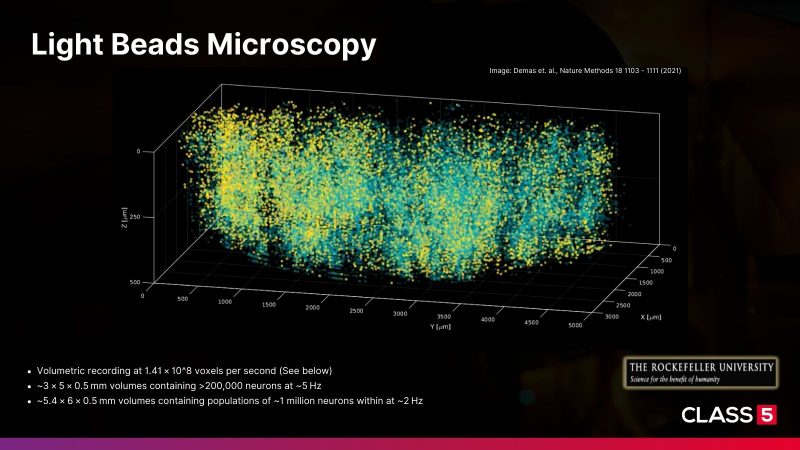
Such advanced measurement schemes set high requirements for the stability of the laser source (Fig. 3). The White Dwarf 2P delivers pulses at 920 or 960 nm at highest average powers, and with repetition rates up to 10 MHz to power scalable and fast volumetric scanning techniques.
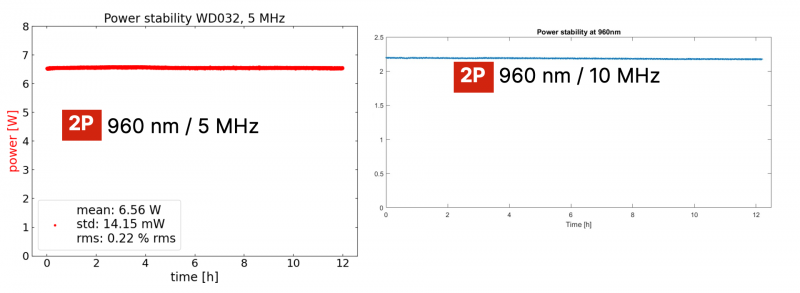
Publication: High-speed, cortex-wide volumetric recording of neuroactivity at cellular resolution using light beads microscopy; Demas, J., Manley, J., Tejera, F. et al.; Nat Methods 18, 1103–1111 (2021). https://www.nature.com/articles/s41592-021-01239-8
Check our White Dwarf laser system for 2-photon high-speed volumetric imaging: https://www.class5photonics.com/multi-photon-microscopy-lasers/white-dwarf-2p/
